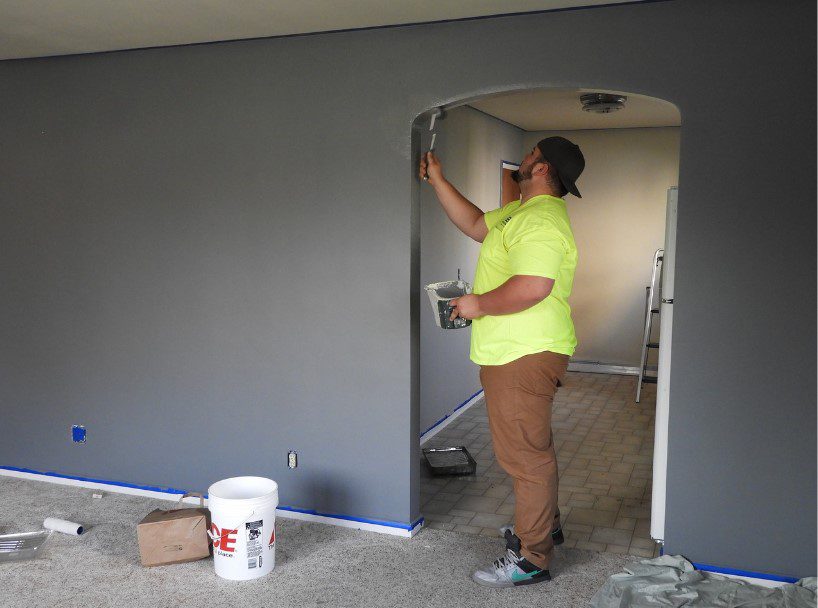The modern-day obsession with technology has facilitated our habits of staying indoors, hence giving meaning to the phrase – indoor generation. We are accustomed to using technology in the comfort of our sofas, automobiles, and indoor offices, at the expense of outdoor activities.
When finally we think we are moving out, we still visit indoor restaurants, malls, gyms, and entertainment centers!
We hardly spend time under the sun,, and nature as a whole, because we think it is a chore. We are always in a hurry to go to work and seek entertainment under some form of a roof!
While it is true COVID-19 condemned us into an indoor lifestyle, the truth is, staying indoors was already a problem the moment we walked into the 21st century.
Covid-19 was, and will only make the situation worse as the years go by!
The TRUE picture of an indoor generation
According to a survey by Velux, we spend 90% of our day indoors. Compare this to 90% of the time our predecessors spent outdoors, a few decades ago in the 20th century!
The Environmental Protection Agency (EPA), echos the same while citing the US as an example:
Americans, on average, spend approximately 90 percent of their time indoors,1 where the concentrations of some pollutants are often 2 to 5 times higher than typical outdoor concentrations.2
Apparently, the journeys we make inside cars, and to workplaces, schools, malls, and the gym happen to be the only time we spend outdoors. This accounts for only 10% of our day.
We actually spend 3 quarters of the 24-hour cycle doing the following:
- Watching TV, movies, and music
- Playing indoor games
- Exercising inside indoor gyms
- Shopping inside malls
- Dining inside restaurants
- Going out for indoor entertainment and sports
- Using apps to order for food and other deliveries
Indoor pollutants & other problems with staying indoors

Yes, there is a problem when we choose to spend the bulk of our time indoors.
First and foremost, indoor air is up to five times more polluted than outdoor air. Yes, our houses collect numerous polluting agents that makes them unsafe for near-permanent abode.
They include chemicals, gasses, and other substances that can have adverse effects on the very young, older peopley, and those suffering from respiratory and cardiovascular diseases.
Interestingly, many of us want to condemn the sick and the old ones to an indoor lifestyle in a bid to make them rest and heal!
People who are often most susceptible to the adverse effects of pollution (e.g., the very young, older adults, people with cardiovascular or respiratory disease) tend to spend even more time indoors.3
EPA
This is wrong.
Even worse, according to WHO, almost 4 million people die every year as a result of illnesses caused by indoor air pollution.
close to 4 million people die prematurely from illness attributable to household air pollution from inefficient cooking practices using polluting stoves paired with solid fuels and kerosene.
The following are examples of pollutants in our houses, offices, and other closed spaces:
- Gas, kerosene stoves, charcoal grills, and wood stoves emit chemical pollutants such as carbon monoxide.
- Volatile organic compounds are present in paint, varnish, wax, and deep-frying.
- Dust, dander, and mold inside buildings are breeding grounds for dust mites. These exacerbate sicknesses in those with allergies and asthma.
- Radon gas is a colorless and odorless gas that is a decay product of uranium and enters buildings from soil and rock.
- Coakroaches can be triggers to serious asthma and nasal allergy.
- Pesticides used to manage roaches, rodents, mosquitoes, etc.
- Toxic materials such as asbestos and lead.
- Very small and inhalable liquid and solid indoor particulate matter from cars, construction sites, dust, and deep-frying.
- Biological pollutants such as bacteria, viruses, pollen, and pet dander, and saliva.
- Low-level non-ionizing radiation (Electromagnetic fields) from Wi-Fi, microwaves, cellphones, computers, electric installations – meters, cables, sockets, etc.
The above pollutants and others can lead to fatigue, dizziness, depression, pneumonia, headaches, heart diseases, leukemia, cancer, etc.
Many of these conditions are caused by exposure to allergens in indoor environments such as the house, work, and school—where we spend as much as 98 percent of our time.
Indoor allergens
In addition, the pollutants can trigger your otherwise silent asthma or make it worse. The same environment makes the body susceptible to allergic reactions.
According to NCBI,
In fact, there is a growing perception that allergy has been underestimated as a public health problem. For example, indoor allergens such as those from dust mites, house pets, cockroaches, and fungi are thought to be responsible for much of the acute asthma in adults under age 50.
On and on the reports and science continue to warn us about the horrors of keeping our children and ourselves in the house and under roofs – all the time.
The beautiful things we miss outdoors
Science has proven that a healthy body works well when connected with nature.
When exposed to the outdoors, the body gets to synchronize with the sun, flora, and fauna. The sun in addition to the night darkness forms the ultimate 24-hour internal human body clock, otherwise known as the circadian clock.
Exposure to the outdoors enhances physical, cognitive, social, and creative skills in children and adults.
This is particularly true in the 21st century where we have to juggle our lives with invasive technology and work distractions.
Elsewhere, exposure to daylight is known to boost learning abilities in children by 15%. Playing close to nature also makes them healthier and intelligent because they are exposed to Vitamin D and other essential micronutrients.
The sunshine Vitamin D also boosts the immune system and enhances the mood due to the serotonin hormone triggered by sunlight!
Exposure to sunlight is thought to increase the brain’s release of a hormone called serotonin. Serotonin is associated with boosting mood and helping a person feel calm and focused.
Finally, when children get out of the house they learn to interact with peers, and by playing and talking together, they learn better social skills than they would if they stayed indoors for extended hours.





Leave a Reply